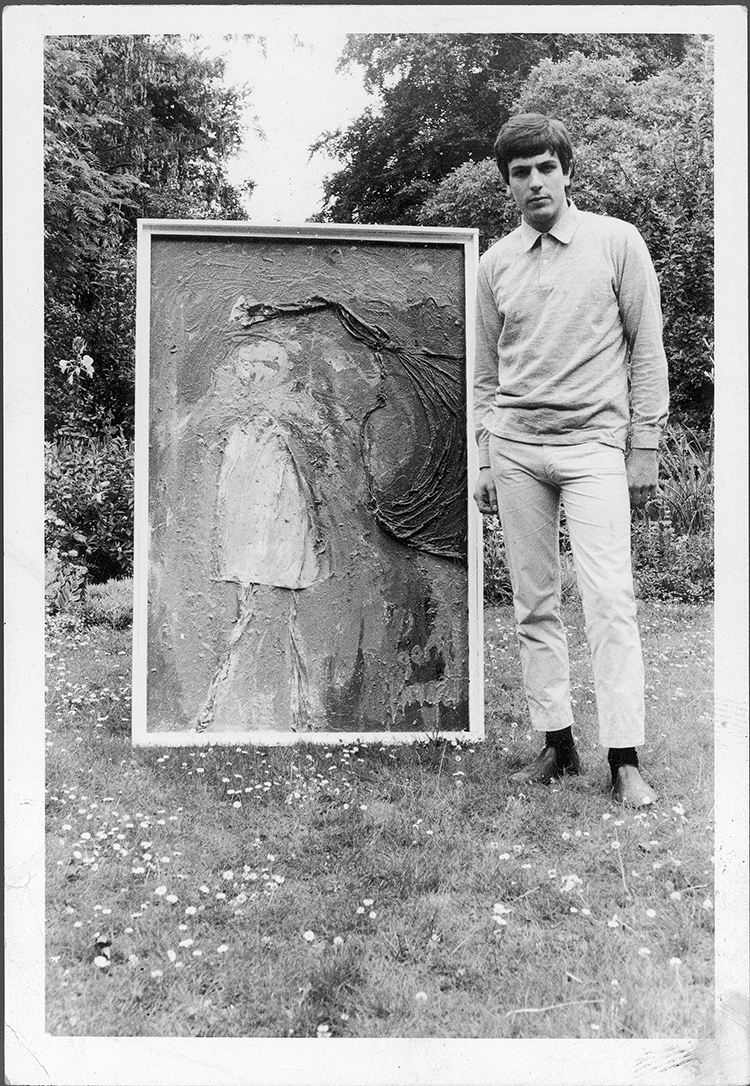Beyond Pink Floyd: A Half-Century of Art from Syd Barrett

Though Syd Barrett passed away five years ago—notoriously estranged from the band with which he is famously associated, Pink Floyd, since 1968—thanks to a retrospective exhibition at London’s Idea Generation Gallery, Syd Barrett: Art and Letters, and an accompanying monograph, Barrett, the man and legend shines on improbably like some crazy diamond.
Renewed interest in the reclusive guitarist’s artwork is the result of unlikely bedfellows. Filmmaker Russell Beecher had produced a 2008 documentary about British counterculture called A Technicolor Dream, in which Floyd figured prominently. “During my research I came across quite a few photographers who had rare and unseen photos of Syd that for one reason or another didn’t make it into the documentary,” says Beecher. “Being a lifelong fan of Floyd, Syd’s era in particular, I thought that these images would be of major interest to fans so the idea for the book was born.”
Around the same time, journalist Will Shutes began researching Syd’s extensive art production after a posthumous auction of ephemera went on the block in fall 2006. “It became clear to me that no body of work had been produced to present, catalog, and unite his art,” says Shutes, who wrote to Barrett’s sister Rosemary, some of his old friends and girlfriends who urged him to continue his research because, “Syd always thought of himself as an artist.”
Shutes’ work culminated in an article in the December 2009 issue of The London Magazine. It caught the attention of art collector Brian Wernham, who was organizing an exhibition of the musician’s works, many of which were being photographed for Russell’s book. Though initially disappointed that someone else had beat him to the punch, when Shutes met Beecher, they decided to collaborate.
“I never in my wildest dreams thought we’d find as much unseen stuff as we did, but constant digging reaped rewards,” says Shutes of the more than 250 images, including photos of every existing artwork from 1962 to Barrett’s death. They also accumulated unpublished letters he’d sent to girlfriends between 1962 and 1965, and some of the first images of Floyd playing live in Denmark and shots by Mick Rock that were previously considered lost. “Russell and I agree that the discovery of a photograph of Syd in 1964 posing with one of his lost paintings defined in one fell swoop what we were trying to do.”
With the help of Wernham, 50-some works (and various archival documents) have been translated to the gallery. Though Shutes ordered his catalog chronologically, that kind of treatment in a gallery setting wasn’t possible due to the large quantities of work Barrett threw away over the years. “In effect you have a half-century art career with large gaps. Once he’d finished a painting, he would see no need to keep it. He’d photograph some works before perhaps destroying them. Often he’d destroy the photos! It’s a pity that so many have been destroyed, but the fact that they have is part of the story—it’s inseparable from his practice as an artist,” says Shutes, who decided to hang the show “aesthetically.”
Translation: collections of bright and expansive Cambridgeshire landscapes hang beside mid-1960s lino prints that evoke Richard Hamilton’s book The Developing Process. Elswhere, there’s a large red abstract expressionist oil painting with pieces of plastic tearing through the canvas; a mosaic of two warriors; a still life of flowers; even a 1979 design for a mural of a trailer that Barrett made as part of occupational therapy.
“There are recognizable, unifying elements to his style, though his habit of experimenting with surface texture is a mainstay throughout his life, with the rips, but also by painting in watercolour,” says Shutes. “I think the most interesting element of all this is that this is someone whose imagination and originality have led him to be studied all this time, and that, when we are talking about his late art, he was working completely apart from the art world, without direct influences. In short, his work is his imagination in action, without any restrictions on it. So the art is one very good key to’‘the real Syd.'”
SYD BARRETT: ART AND LETTERS IS OPEN THROUGH APRIL 10 AT IDEA GENERATION GALLERY IN LONDON. THE MONOGRAPH, BARRETT, IS AVAILABLE THROUGH THE GALLERY AND ONLINE.






